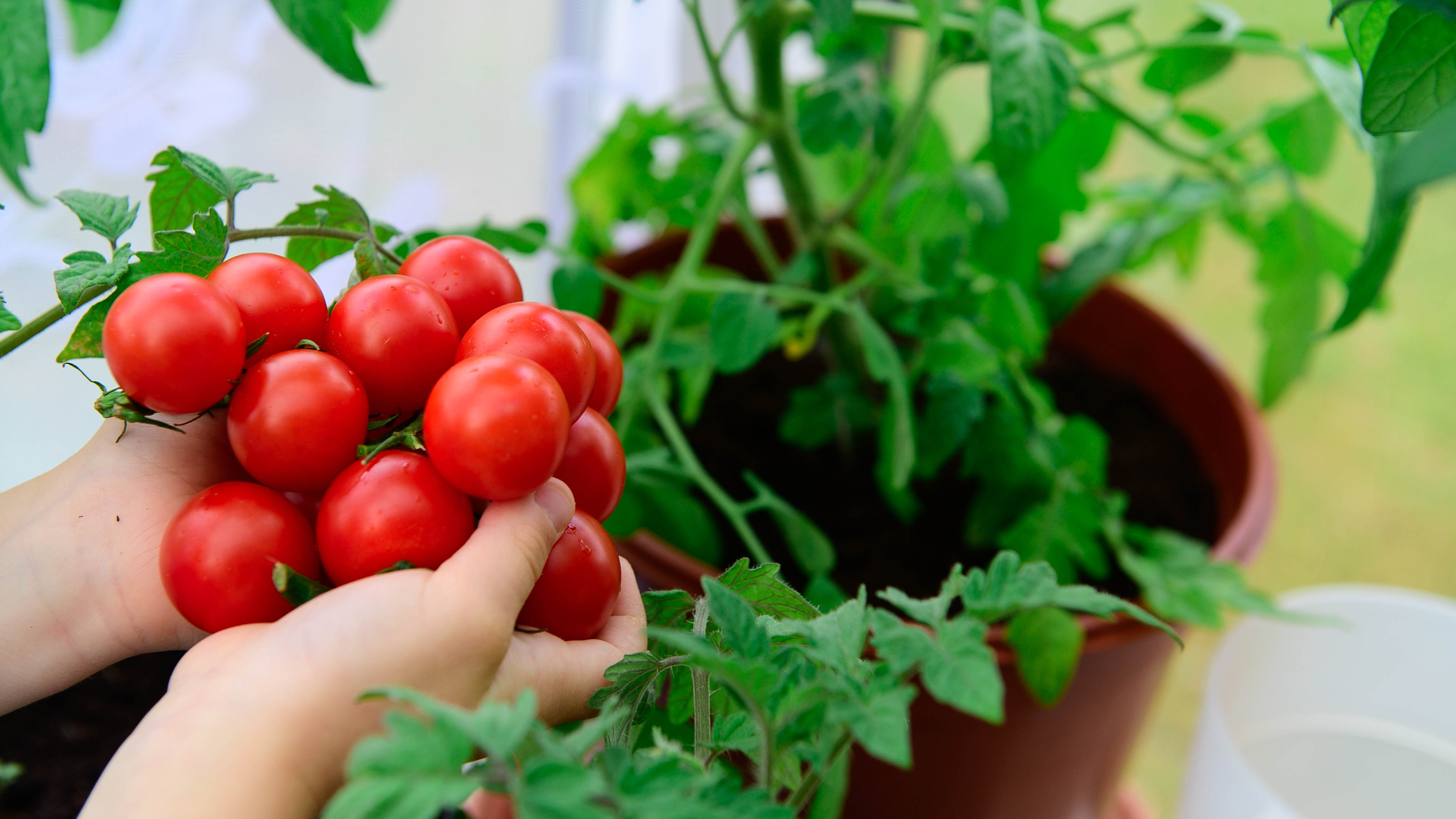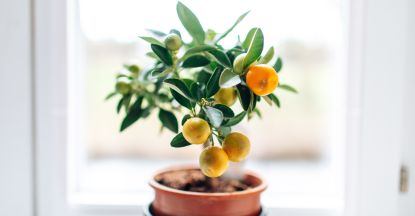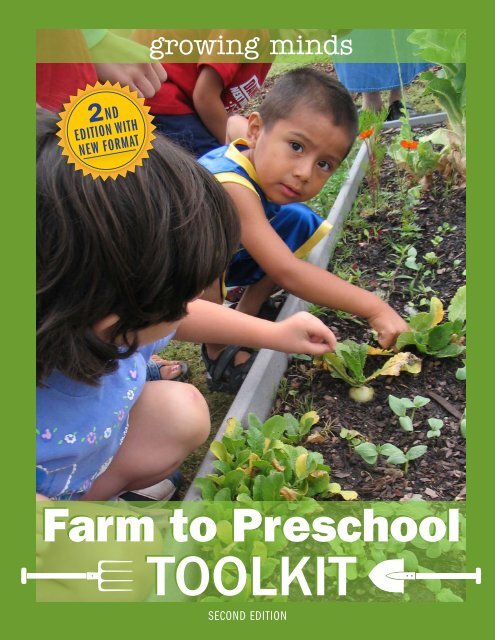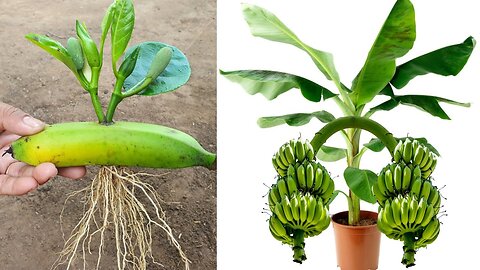Grow Cherry from Seeds: Easy Steps for Thriving Trees
To grow cherry from seeds, start by stratifying the seeds in the refrigerator for several weeks to mimic winter conditions. Then, plant the seeds in well-drained soil and keep them consistently moist.
Additionally, provide them with plenty of sunlight and protect them from extreme temperatures. With proper care and patience, you can successfully grow cherry trees from seeds. Growing cherry trees from seeds can be a rewarding and enjoyable experience. Whether you want to try your hand at gardening or simply want to witness the magical transformation from a tiny seed to a fruitful tree, this guide will provide you with the necessary steps to successfully grow cherry trees from seeds.
With just a little effort and some patience, you can enjoy the beauty and taste of your very own cherry tree. So, let’s get started on this fulfilling horticultural adventure.

Credit: www.tomsguide.com
The Cherry Seed: A Potential For Thriving Trees
Unlock the potential of thriving cherry trees by growing them from seeds. Discover the wonders of cherry seed propagation and enjoy the rewards of cultivating your very own cherry tree.
Thinking of growing your own cherry tree from seeds? Well, you’re in for an exciting journey! The cherry seed holds immense potential for thriving trees that can provide you with delicious fruit while adding beauty to your garden. But how do you ensure successful cherry tree growth?
Let’s explore the factors that influence this process and set you on the path to a fruitful harvest.
Factors Influencing Successful Cherry Tree Growth:
- Soil quality: The right soil is essential for cherry tree growth. Ensure the soil is well-draining and rich in nutrients for optimal development.
- Sunlight exposure: Cherry trees thrive in full sunlight, so select a location where they can receive at least 6-8 hours of direct sunlight daily.
- Pollination: Many cherry tree varieties require cross-pollination for fruit-bearing. Make sure to plant different cherry trees or provide suitable pollinators nearby.
- Chilling requirement: Most cherry trees need a period of winter dormancy to set fruit properly. Ensure your climate offers sufficient chilling hours for successful growth.
- Watering and irrigation: Consistent watering is crucial during the first few years. Adequate moisture helps establish healthy roots and promotes overall tree growth.
- Pruning and training: Proper pruning and training of cherry trees ensure optimal shape, size, and fruit production. Regular maintenance helps in disease prevention and improves overall tree health.
- Disease and pest control: Cherry trees are susceptible to various diseases and pests. Stay vigilant, implement preventive measures, and take appropriate action if necessary.
Growing your own cherry tree from seeds is an exciting endeavor. By considering these factors, you can create an ideal environment for your cherry tree to thrive, fulfilling your gardening dreams and eventually providing you with delectable cherries. Happy growing!
Choosing The Right Cherry Seeds
Discover the perfect cherry seeds for growing your own cherry tree at home. Find high-quality seeds that will ensure a successful and fruitful harvest.
Growing cherries from seeds can be a rewarding and enjoyable experience. However, it’s important to choose the right cherry seeds to ensure successful growth. Here are some factors to consider when selecting your cherry seeds:
- Identifying viable cherry seeds: To ensure germination success, it’s crucial to identify cherry seeds that are viable. Look for seeds that are firm, plump, and undamaged. Avoid seeds that are shriveled, discolored, or have mold on them. Viable cherry seeds will have a higher chance of sprouting and developing into healthy plants.
- Considering different cherry cultivars: Cherry trees come in various cultivars, each with its own unique characteristics. When choosing cherry seeds, consider the specific cultivar you want to grow. Some popular cherry cultivars include bing, rainier, and montmorency. Research each cultivar’s requirements for temperature, sunlight, and soil conditions to ensure you can provide the optimal environment for their growth.
- Matching cherry cultivars to your climate: Before selecting cherry seeds, it’s important to consider your climate and growing conditions. Certain cherry cultivars thrive in specific climates, so be sure to choose seeds that are suitable for your region. For example, if you live in a colder climate, choose a cold-hardy cherry variety that can withstand frost and chilly temperatures.
- Purchasing from reputable sources: To increase the chances of acquiring high-quality cherry seeds, it’s advisable to purchase them from reputable sources. Look for seed suppliers that specialize in fruit trees and have positive customer reviews. This will ensure that you receive fresh, viable seeds that are more likely to germinate and grow successfully.
- Consider cherry seed stratification: Some cherry seeds require stratification, a process that simulates winter conditions and helps break seed dormancy. Before planting, check if the cherry seeds you have chosen need this treatment. Stratification involves exposing the seeds to cold temperatures for a specific period before sowing, enhancing their germination potential.
Remember, choosing the right cherry seeds is just the first step in growing your own cherry tree. Providing proper care and maintaining favorable growing conditions will significantly contribute to the success of your cherry tree’s growth and fruit production. Happy gardening!
Preparing And Germinating Cherry Seeds
Learn how to successfully grow cherry trees from seeds by carefully preparing and germinating the cherry seeds. By following these steps, you can enjoy the satisfaction of growing your own cherry tree from scratch.
The Importance Of Stratification
- Cherry seeds require a process called stratification in order to improve germination rates.
- Stratification involves subjecting the seeds to cold temperatures, mimicking winter conditions.
- Cold stratification is crucial for breaking seed dormancy and ensuring successful germination.
- This process softens the seed coat and triggers the seed to begin sprouting.
- By providing optimal conditions for germination, stratification significantly increases the chances of growing cherry plants from seeds.
Step-By-Step Guide To Germinating Cherry Seeds
- Obtain fresh cherry seeds by extracting them from ripe fruit.
- Rinse the seeds thoroughly to remove any remaining pulp.
- Prepare a moist stratification medium, such as peat moss or vermiculite.
- Place the seeds in the stratification medium, ensuring they are evenly spaced.
- Seal the seeds and the medium in a plastic bag or container.
- Store the container in the refrigerator for about three to four months.
- Check the seeds occasionally to ensure they remain moist but not soaked.
- After the stratification period, remove the seeds from the refrigerator.
- Plant the germinated cherry seeds in a suitable growing medium.
- Keep the seeds in a warm, well-lit area, preferably near a window.
- Provide regular watering and ensure proper drainage for the growing cherry plants.
- With patience and care, your cherry seeds should sprout within a few weeks.
By understanding the importance of stratification and following this step-by-step guide, you can increase your chances of successfully germinating cherry seeds and growing your own cherry plants. Enjoy the process of nurturing these seeds into thriving plants that will reward you with delightful cherries in the future.
Creating An Optimal Growing Environment For Cherry Trees
An optimal growing environment for cherry trees is essential when growing them from seeds. Provide ample sunlight, well-draining soil, and consistent watering to ensure healthy growth and a bountiful harvest.
Cherries are not only delicious but also make a beautiful addition to any garden or landscape. To successfully grow cherry trees from seeds, it is essential to create an optimal growing environment. This section will guide you through selecting the right location, preparing the soil, and ensuring sufficient sunlight and water for your cherries to thrive.
Selecting The Right Location For Cherry Tree Growth:
- Choose a location with full sun exposure: Cherries require at least 6-8 hours of direct sunlight daily to produce healthy and abundant fruit.
- Ensure proper drainage: Select a site with well-draining soil to prevent waterlogging, which can lead to root rot and other diseases.
- Consider the microclimate: Cherry trees thrive in areas with cold winters and mild summers. If you live in a region with warm winters or hot summers, choose cherry tree varieties specifically suited for your climate.
Preparing The Soil For Optimal Cherry Tree Growth:
- Conduct a soil test: Test your soil’s ph level to ensure it falls within the ideal range of 6.0-6.8 for cherry trees. Adjust the ph if necessary by adding organic matter or other soil amendments.
- Improve soil structure: Incorporate organic matter, such as compost or well-rotted manure, to enhance soil fertility, drainage, and moisture retention.
- Remove weeds and grass: Clear the planting area of any unwanted vegetation to reduce competition for nutrients and water.
Ensuring Sufficient Sunlight And Water For Cherries:
- Watering requirements: Cherry trees need regular watering, especially during the growing season. Provide 1-2 inches of water per week, ensuring the soil remains evenly moist. Avoid overwatering, as it can cause root diseases.
- Mulching benefits: Apply a layer of organic mulch around the base of the tree to conserve moisture, suppress weed growth, and regulate soil temperature.
- Sun exposure: Position your cherry tree where it receives maximum sunlight. Avoid planting near large trees or structures that may shade the tree.
By creating an optimal growing environment for your cherry trees, you are setting the stage for healthy growth and a bountiful harvest. Remember to choose the right location, prepare the soil adequately, and provide sufficient sunlight and water. With proper care and patience, your cherry trees will flourish and reward you with delicious cherries to enjoy.
Nurturing Young Cherry Trees
Nurturing young cherry trees grown from seeds entails providing optimal growing conditions such as well-drained soil, regular watering, and proper sunlight exposure. Pruning, fertilizing, and protecting against pests and diseases are also essential to ensure healthy growth.
Young cherry trees require proper care and attention to ensure healthy growth and bountiful fruit production. By following a few key practices, you can help nurture your young cherry trees for optimal results. In this section, we will explore the essential tasks of pruning and shaping cherry tree growth, fertilizing and watering, as well as protecting the trees from pests and diseases.
Pruning And Shaping Cherry Tree Growth
Pruning plays a vital role in shaping the growth of young cherry trees. By removing certain branches early on, you can encourage the tree to develop a strong structure and promote better fruit production. Here are some key points to keep in mind when pruning cherry trees:
- Remove any dead, damaged, or diseased branches to prevent the spread of infections.
- Prune away branches that grow inward or cross each other, as they can impair air circulation and increase the risk of disease.
- Maintain an open center of the tree by pruning away branches that form a congested canopy.
- Cut back vigorous vertical shoots known as water sprouts to redirect the tree’s energy to more productive growth.
Fertilizing And Watering Young Cherry Trees
Proper fertilization and watering are crucial for the healthy development of young cherry trees. Here are some guidelines to keep in mind:
- Apply a balanced fertilizer in early spring to provide essential nutrients for growth. Look for a fertilizer specifically formulated for fruit trees.
- Water young cherry trees regularly, ensuring that the soil remains consistently moist but not waterlogged. Aim for about 1-2 inches of water per week.
- Mulch the base of the tree with organic material, such as wood chips or straw, to retain moisture and suppress weed growth.
Protecting Cherry Trees From Pests And Diseases
Protecting young cherry trees from pests and diseases is essential to ensure their long-term health and productivity. Here are some measures you can take:
- Regularly inspect the trees for signs of pests, such as aphids, mites, or caterpillars. If detected, use appropriate insecticides or employ natural pest control methods.
- Implement a spray program to prevent common cherry tree diseases, like powdery mildew, bacterial canker, or cherry leaf spot. Consult with a local extension office for suitable fungicides.
- Prune out any infected or diseased branches promptly to prevent the spread of diseases.
- Maintain a clean and tidy orchard, removing fallen leaves and debris that can serve as hiding places for pests and harbor disease-causing organisms.
By following these nurturing practices, you can provide the necessary care and attention to your young cherry trees. Remember, regular monitoring, timely pruning, proper fertilization, and pest control are the keys to fostering healthy growth and ensuring a bountiful harvest of delicious cherries.
Monitoring And Maintaining Cherry Trees
To successfully grow cherry trees from seeds, it is crucial to monitor and maintain them with care. Regularly check for proper watering, fertilization, and protection from pests to ensure healthy growth.
Cherry trees require regular monitoring and maintenance to ensure healthy growth and minimize the risk of stress or nutrient deficiencies. By recognizing signs of stress or nutrient deficiency and implementing regular maintenance practices, you can promote optimal cherry tree growth and productivity.
Recognizing Signs Of Stress Or Nutrient Deficiency In Cherry Trees
- Wilting leaves: Leaves that appear droopy or wilted can indicate water stress or nutrient deficiency.
- Discolored leaves: Yellowing, browning, or spotting on leaves may indicate nutrient deficiencies, such as nitrogen (yellowing) or magnesium (brown spots).
- Stunted growth: Slow or limited growth can be a result of various stressors, including nutrient deficiencies or inadequate watering.
- Leaf curling: Curling or distortion of leaves can indicate heat stress, insect damage, or nutrient deficiencies.
- Leaf drop: Premature leaf drop may signify stress or nutrient imbalances in the tree.
- Lack of fruit production: Insufficient nutrient uptake or stress can lead to reduced or no fruit production.
Regular Maintenance Practices For Healthy Cherry Tree Growth
To maintain healthy cherry trees, it is important to implement regular maintenance practices. These include:
- Pruning: Prune cherry trees during the dormant season to remove dead or diseased wood, improve air circulation, and promote new growth.
- Watering: Provide regular deep watering, especially during dry spells, to ensure adequate moisture reaches the tree’s root system.
- Fertilizing: Apply a balanced fertilizer in late winter or early spring to provide essential nutrients for healthy tree growth. Follow the recommended dosage on the fertilizer package.
- Mulching: Apply a layer of organic mulch around the base of the tree to conserve moisture, suppress weeds, and improve soil fertility.
- Pest and disease management: Regularly monitor the tree for signs of pests or diseases, and take appropriate measures, such as using organic pest control methods or applying fungicides when necessary.
- Sunlight exposure: Ensure cherry trees receive sufficient sunlight exposure for optimum growth and fruit production.
By recognizing signs of stress or nutrient deficiency in cherry trees and implementing regular maintenance practices, you can promote healthy growth and ensure the productivity of your cherry trees. Regular monitoring will help identify and address any problems early on, allowing you to enjoy a bountiful harvest of delicious cherries.
Harvesting And Enjoying The Fruits Of Your Labor
Grow cherry trees from seeds and savor the satisfaction of harvesting your own juicy fruits. Indulge in the sweet taste of your labor with these simple steps for a fruitful outcome.
Identifying Cherry Tree Maturity For Harvesting:
- Look for the right color: Ripe cherries will have a deep, vibrant color, depending on the variety. Pay attention to hues of red, dark red, or black, as these indicate maturity.
- Firmness matters: When gently squeezing the cherry, it should have a firm texture. If it feels soft or mushy, it might be overripe.
- Stem condition: Check if the stem is green and flexible. If it starts to turn brown and wither, it’s a sign that the cherry is ready to be picked.
- Taste test: If you’re unsure about the cherry’s ripeness, go ahead and taste it. Trust your taste buds, as the sweetness and flavor will indicate if it’s prime for picking.
Tips For Picking And Storing Cherries:
- Start early in the morning: Harvesting cherries in the cool morning hours helps retain their freshness and flavor.
- Gently twist and pull: To avoid damaging the cherries, grasp the fruit firmly and give it a slight twist before pulling it off the branch. The stem should come off easily.
- Use a picking bucket or bag: Opt for a container that allows air circulation to prevent cherries from becoming crushed or overheating.
- Store cherries unwashed: Moisture promotes spoilage, so it’s best to wait until you’re ready to consume the cherries before washing them.
- Refrigerate for longevity: Keep cherries refrigerated at around 32-36°f (0-2°c) to prolong their shelf life. Use a breathable bag or container to prevent moisture buildup.
Delicious Recipes To Enjoy Your Home-Grown Cherries:
- Cherry pie: Use your freshly harvested cherries to whip up a classic cherry pie. The sweet and tangy filling pairs perfectly with a buttery, flaky crust.
- Cherry jam: Preserve the flavors of your home-grown cherries by making a delightful cherry jam. Spread it on toast or use it as a topping for pancakes.
- Cherry smoothie: Blend cherries with your favorite yogurt, milk, or juice for a refreshing and nutritious smoothie. Add a touch of honey or a splash of lemon for extra flavor.
- Cherry salsa: Combine diced cherries, onions, jalapeños, cilantro, lime juice, and a pinch of salt for a unique twist on traditional salsa. Serve it with grilled meats or as a dip with tortilla chips.
- Cherry salad: Toss cherries in a vibrant salad with mixed greens, goat cheese, candied nuts, and a balsamic vinaigrette for a burst of sweetness in every bite.
Now that you have learned how to identify cherry tree maturity, pick and store cherries properly, and explore delicious recipes, get ready to savor the fruits of your labor in various delightful ways. Experiment with these recipes and enjoy the sweet and tart flavors of your home-grown cherries.
Happy harvesting!
Troubleshooting Common Issues In Cherry Tree Growth
Troubleshooting common issues in growing cherries from seeds is essential for successful cherry tree growth. From seed germination problems to nutrient deficiencies, understanding and addressing these issues ensures healthy and thriving cherry trees.
Cherry trees are lovely additions to any garden, with their beautiful blossoms and delicious fruit. However, just like any other plant, they can encounter some issues along the way. In this section, we will discuss some common problems that cherry trees face and provide solutions for addressing these challenges.
So if you’re experiencing any difficulties in growing your cherry tree, read on to troubleshoot these common issues.
Common Diseases And Pests Affecting Cherry Trees:
• brown rot: this fungal disease is common in cherry trees and causes fruit to rot quickly. To prevent brown rot, ensure proper air circulation by pruning branches. Also, remove any infected fruit and dispose of it properly.
• cherry leaf spot: leaf spot is caused by a fungus that leads to the development of small, purple spots on the leaves. To combat cherry leaf spot, apply fungicide at the first sign of infection and practice good sanitation by removing infected leaves.
• aphids: these tiny insects can cause significant damage to cherry trees as they feed on the sap from the leaves and stems. To get rid of aphids, use insecticidal soap or neem oil and encourage the presence of natural predators like ladybugs or lacewings.
• birds: cherries are a favorite snack for birds, which can be frustrating for growers. To protect your fruit, you can use netting or scare devices like reflective tape or wind chimes to deter them.
Solutions For Addressing Cherry Tree Problems:
• ensure proper watering: cherry trees need consistent moisture, especially during the first few years of growth. Water deeply and evenly, especially during dry spells, but be careful not to overwater, as it can lead to root rot.
• provide adequate sunlight: cherry trees thrive in full sun, so make sure they receive at least six hours of direct sunlight each day. If your tree is not getting enough sun, consider pruning nearby trees that may be shading it.
• prune properly: regular pruning helps improve air circulation and sunlight penetration, reducing the risk of fungal diseases. Prune in late winter or early spring, removing any dead, damaged, or crossing branches.
• fertilize appropriately: apply a balanced fertilizer during the early spring to promote healthy growth. Avoid over-fertilizing, as it can lead to excessive foliage production and reduce fruit production.
• monitor for signs of disease and pests: regularly inspect your cherry tree for any signs of disease or pest infestation. Early detection allows for prompt treatment and minimizes the risk of spreading.
By implementing these solutions and staying vigilant in caring for your cherry tree, you can overcome many common issues and ensure a healthy and fruitful tree. Remember to provide proper care, keep an eye out for any problems, and take swift action to address them.
Happy cherry tree growing!
Frequently Asked Questions Of Grow Cherry From Seeds
How Long Does It Take To Grow A Cherry Tree From A Seed?
It takes about 3-5 years for a cherry tree to grow from a seed.
Can You Plant Cherry Seeds From Fresh Cherries?
Yes, you can plant cherry seeds from fresh cherries. To do this, remove the seeds from the cherries and wash them thoroughly. Let the seeds dry for a few days. Prepare a pot with well-draining soil and plant the dried cherry seeds about an inch deep in the soil.
Water the soil regularly to keep it moist. Place the pot in a location that receives plenty of sunlight. Within a few weeks, you should start to see sprouts emerging from the soil. Continue to care for the seedlings by providing them with adequate water and sunlight.
It is important to note that the cherries grown from these seeds may not be identical to the parent plant as they can cross-pollinate with other cherry varieties. Enjoy the process of growing your own cherry tree from fresh cherry seeds!
How Do You Germinate A Cherry Tree Seed?
To germinate a cherry tree seed, follow these steps:1. Soak the seed in water for 24 hours to soften the outer shell. 2. Fill a pot with potting soil, leaving about an inch of space at the top. 3.
Place the seed on top of the soil and cover it with a thin layer of soil. 4. Water the soil until it is moist, but not soaked. 5. Cover the pot with a plastic bag to create a humid environment.
6. Keep the pot in a warm, well-lit area, such as near a window. 7. Check the soil regularly and water as needed to keep it moist. 8. After a few weeks, the seed should start to germinate. 9. Once the seedling has grown several sets of leaves, it can be transplanted into a larger container or outdoors.
Remember, germination can be a slow process, so be patient and provide the right conditions for success.
Do You Need 2 Cherry Trees To Produce Fruit?
Cherry trees don’t necessarily require another tree to produce fruit. While some varieties benefit from cross-pollination, there are self-pollinating cherry trees available. These trees have both male and female reproductive parts on a single flower, allowing them to produce fruit on their own.
Self-pollinating cherry trees make it possible to have just one tree in your garden and still enjoy a bountiful harvest. However, even self-pollinating trees can benefit from cross-pollination, which can improve yields and fruit quality. If you have space, planting two or more cherry trees of different varieties can be advantageous.
This allows for cross-pollination to occur, leading to increased fruit production. Nonetheless, a single self-pollinating cherry tree is sufficient for producing fruit.
Conclusion
Growing cherry trees from seeds can be a rewarding and enjoyable experience. By following the steps outlined in this blog post, you can successfully germinate and nurture cherry seeds into healthy and robust trees. Remember to choose the right cherry variety that thrives in your climate, prepare the soil properly, and provide adequate care and maintenance throughout the growing process.
With patience and dedication, you can soon enjoy the beauty of blooming cherry blossoms and the taste of fresh, homegrown cherries. Whether you are an avid gardener or a beginner, giving it a try and growing cherry trees from seeds can be a fulfilling and educational endeavor.
So, grab your gardening tools, get your hands dirty, and embark on this wonderful journey of growing your very own cherry tree. Happy growing!




